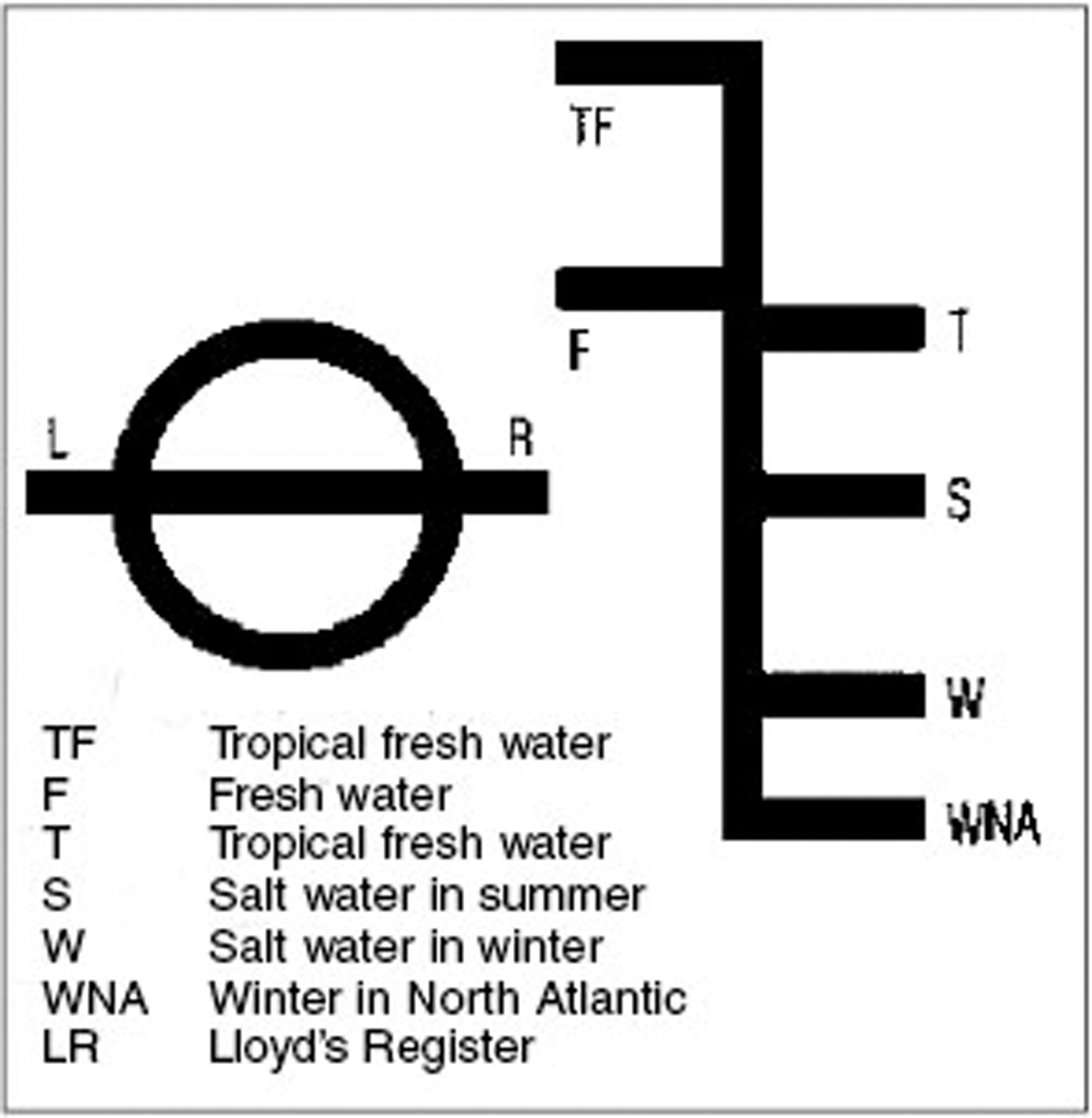Among the many hieroglyphics that can be found on vessels sailing the ocean and the Strait of Juan de Fuca, there’s none more important than the Plimsoll line.
Known also as the International Load Line, it is a visual reference on the hull for all to see. It clearly identifies the limits to which a cargo ship can be loaded.
Historically, loading regulations date back to 2500 B.C., when the kingdom of Crete required vessels to pass loading and maintenance inspections.
In the Middle Ages, Venice, Italy, required that a cross be used to mark a vessel’s load line, and Genoa, Italy, required three horizontal lines.
In 1835, Lloyd’s Register of British and Foreign Shipping introduced a convention known as “Lloyd’s Rule,” used for a half-century, that calculated a ship’s load line by allowing a foot of draft for every 3 inches of a vessel’s freeboard — the height from the water line to the main deck.
Despite the use of Lloyd’s Rule, the overloading of ships was a constant problem that endangered the lives of their crews.
Additionally, unethical, amoral and corrupt ship-owners were known to intentionally overload a ship while simultaneously over-insuring it with the expectation that the vessel would be lost at sea.
These vessels were known as “coffin ships.”
In the late 1860s, Samuel Plimsoll, a member of the British Parliament, took up the seamen’s cause by proposing safe load lines for ships.
With rare exception, all commercial ships have a load line symbol painted amidships on each side of the hull.
This symbol must be permanently marked so that if the paint wears off, it remains visible.
The exact location of the load line is calculated and certified by the classification society under whose construction standards a vessel is built.
The purpose of the Plimsoll line is to ensure that a ship has sufficient freeboard and thus sufficient reserve buoyancy (the enclosed volume created by the area between the waterline and the main deck) by establishing a ship’s draft and the legal limit to which it may be loaded in varying water types and temperatures.
Without going into Archimedes’ principle on buoyancy, suffice it to say that temperature affects a ship’s draft.
Warm water provides less buoyancy, being less dense than cold water, as does salinity because fresh water is less dense than salty sea water.
The original Plimsoll mark was a circle with a horizontal line through it to show the maximum draft of a ship.
Through the years, additional marks have been added to account for the different water densities and sea conditions.
Letters also may appear to the sides of the mark to indicate the classification society that has certified the vessel’s load line (see graphics).
Some of the initials that are used include AB for the American Bureau of Shipping, BV for Bureau Veritias and LR for Lloyd’s Register.
The typical Plimsoll line has six marks, each of which has an attendant letter or letters(s).
On a local note, Polar Tankers Inc., the ConocoPhillips subsidiary that operates five crude-oil tankers on the Alaska route, has altered the Plimsoll lines on its vessels to accommodate the 125,000 deadweight-tons restriction for tankers in the Strait east of Port Angeles and Puget Sound.
Polar added its own mark a few feet below the WNA mark with the letters PS.
Yes, it stands for Puget Sound.
New at school
The Northwest School of Wooden Boatbuilding has added Pamela Roberts to its staff as director of education and student services administrator.
She has more than 33 years of educational experience as a teacher, public-school principal, university faculty member and educational consultant.
Pete Leenhouts, executive director of the school in Port Hadlock, said Roberts will lead the exploration of current and best instructional practices, including curriculum development.
Pete added that she’ll be an essential member of the school’s accreditation team as its undergoes its accreditation inspection later this year — the fourth since the school’s initial accreditation in 1993.
Roberts also is an accomplished videographer and website developer — skills that will benefit the boat-building school in its ability to share knowledge about traditional and contemporary wooden boat-building.
More about the Northwest School of Wooden Boatbuilding can be found at www.nwboatschool.org.
Engine trouble
The green hull of CSCL Manzanillo and her multicolored stacks of shipping containers have struck quite a sight since anchoring late last week in Port Angeles Harbor.
The vessel, which is flagged in Hong Kong and bears big white capital letters “China Shipping Line” — she is owned by China Shipping Container Lines Co. Ltd., standing for the CSCL in the name — is a 685-foot container ship that when fully loaded can hold 2,500 containers, 400 of which can be refrigerated.
Manzanillo left the Port of Seattle early Tuesday evening bound for Vancouver, B.C.
At some point, she apparently developed an engine problem and diverted to Port Angeles.
Details are a bit sketchy, but I understand that the ship threw a rod and was awaiting repair parts.
Until she regains power, the vessel will be chaperoned by a tug, lest she wanders too far from her anchorage.
Fueling up
On Tuesday, Tesoro Petroleum on Port Angeles Harbor bunkered British Councillor, a 755-foot liquid petroleum gas carrier that is flagged in the United Kingdom.
________
David G. Sellars is a Port Angeles resident and former Navy boatswain’s mate who enjoys boats and strolling the waterfront.
Items involving boating, port activities and the North Olympic Peninsula waterfronts are always welcome.
Email dgsellars@hotmail.com or phone him at 360-808-3202.
His column, On the Waterfront, appears every Sunday.
